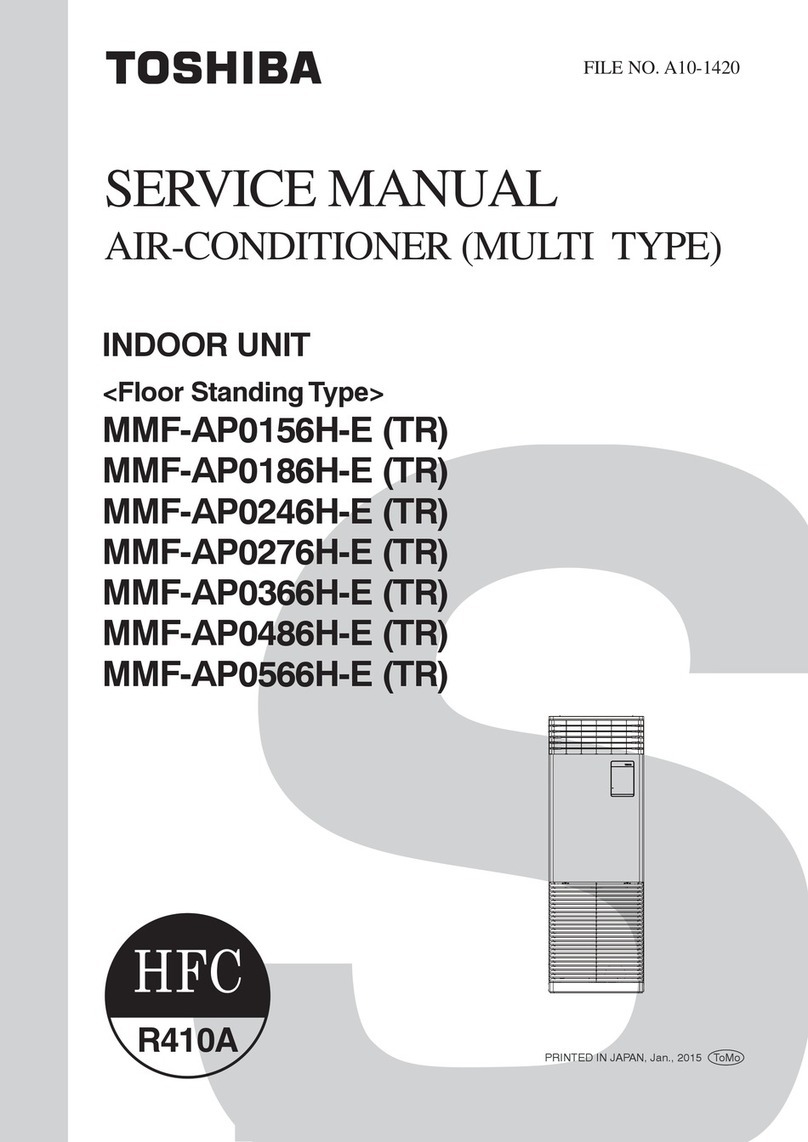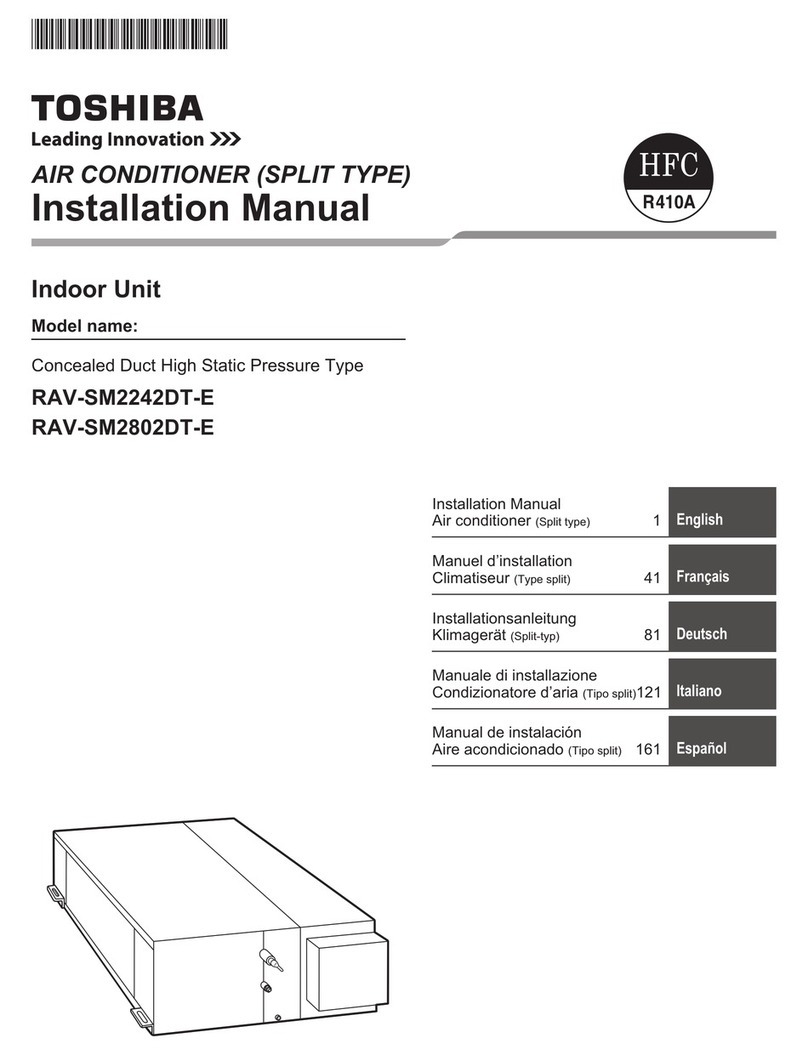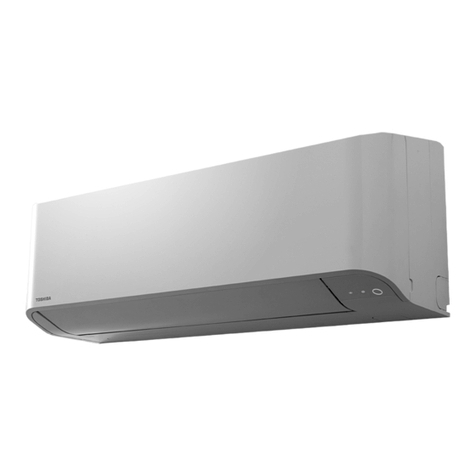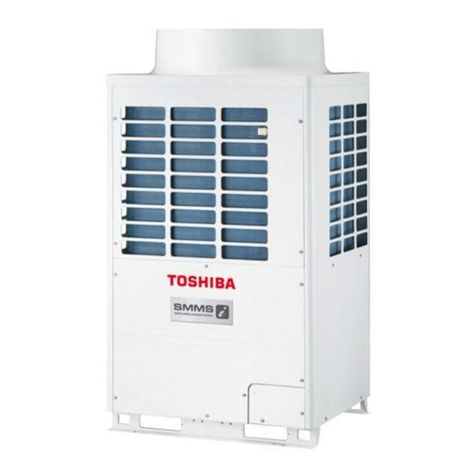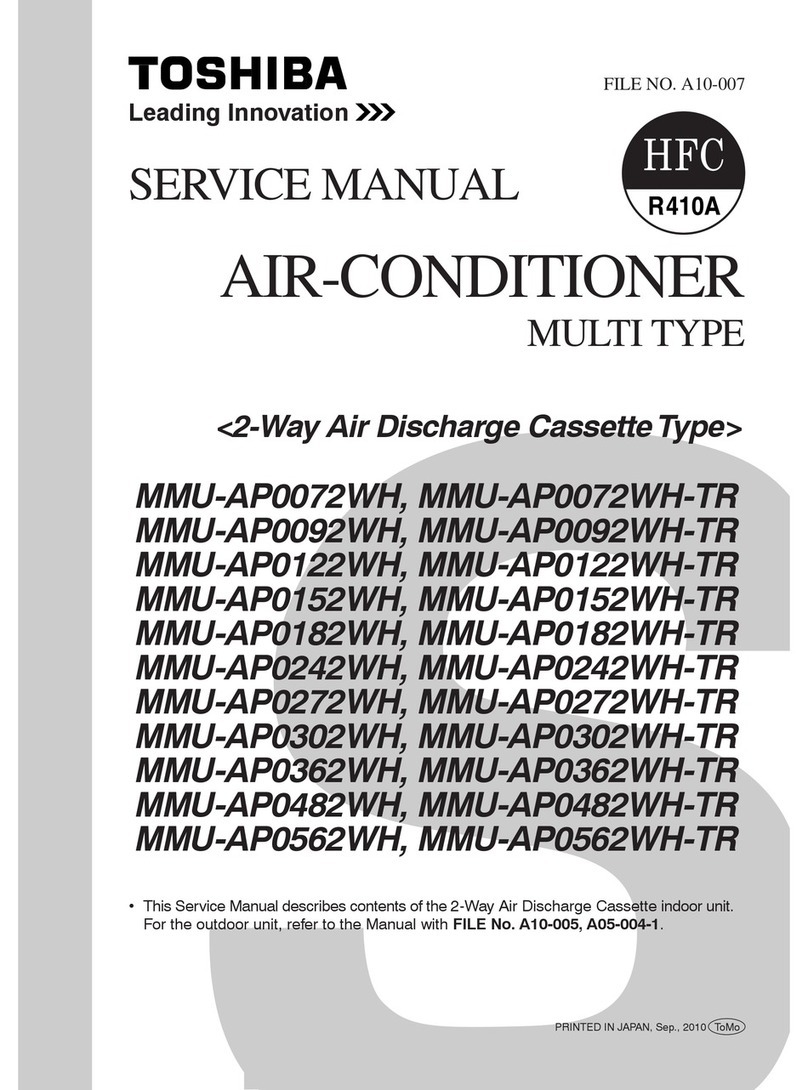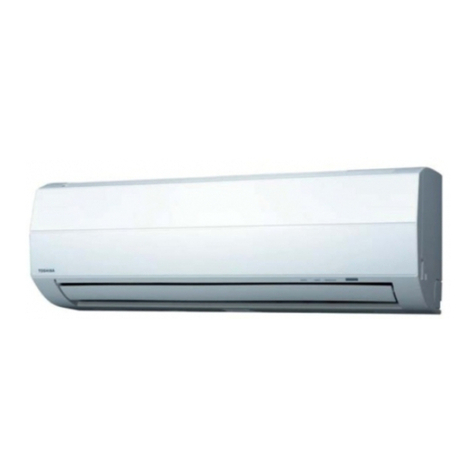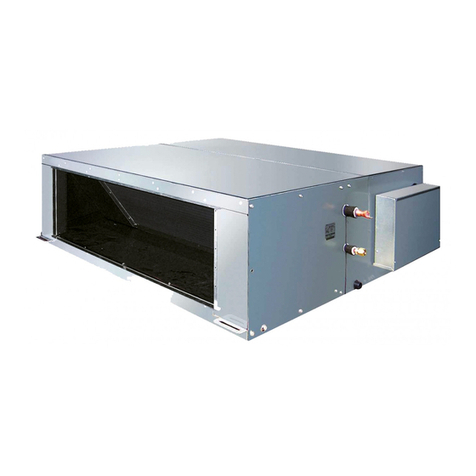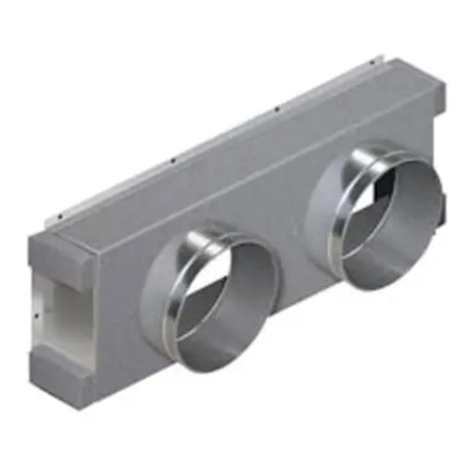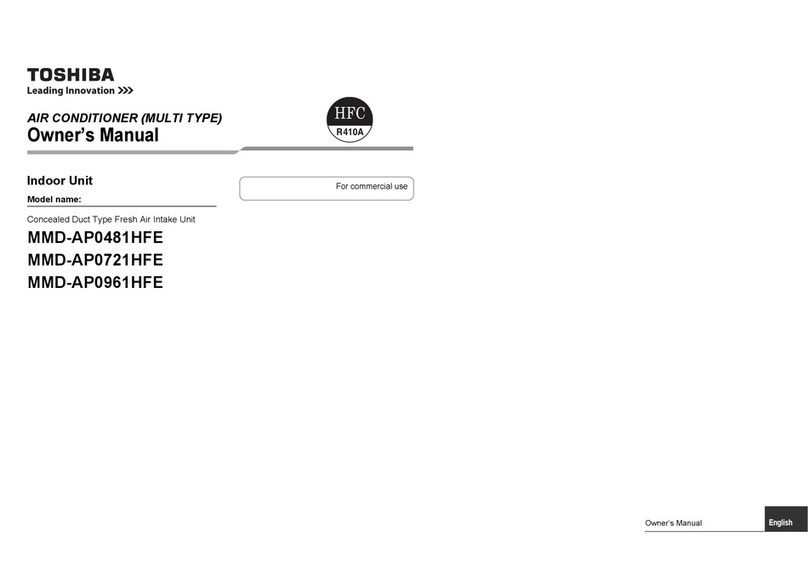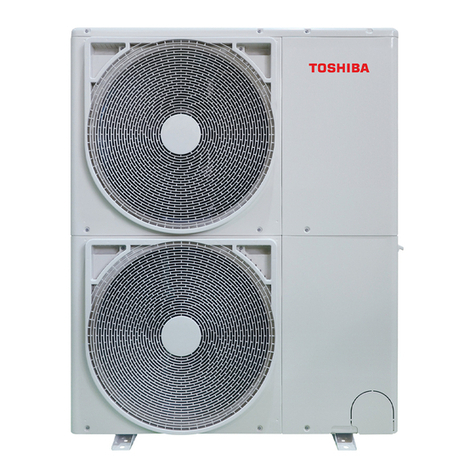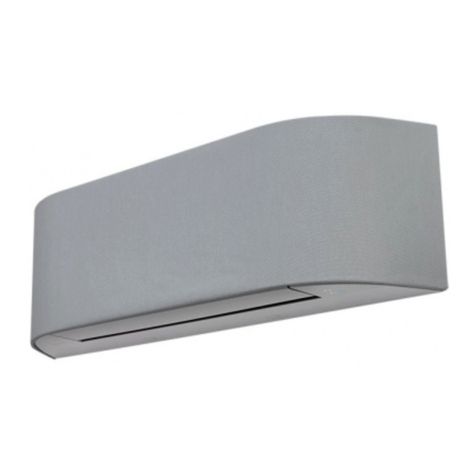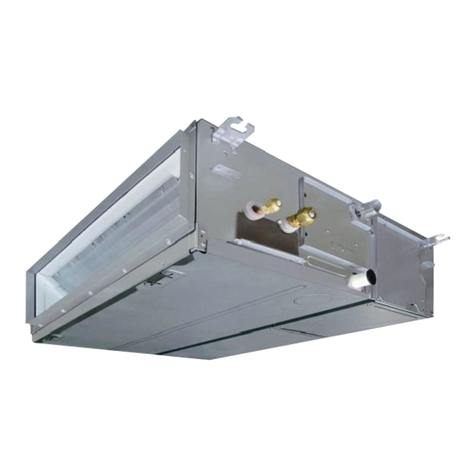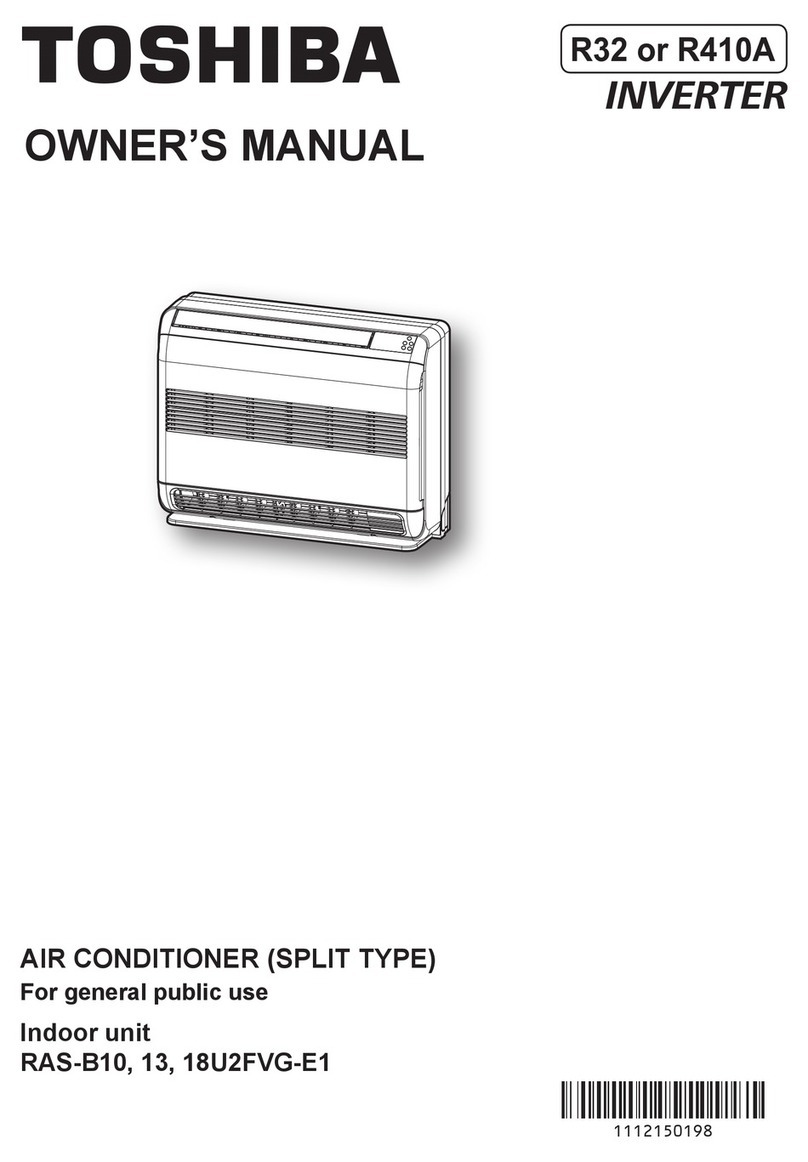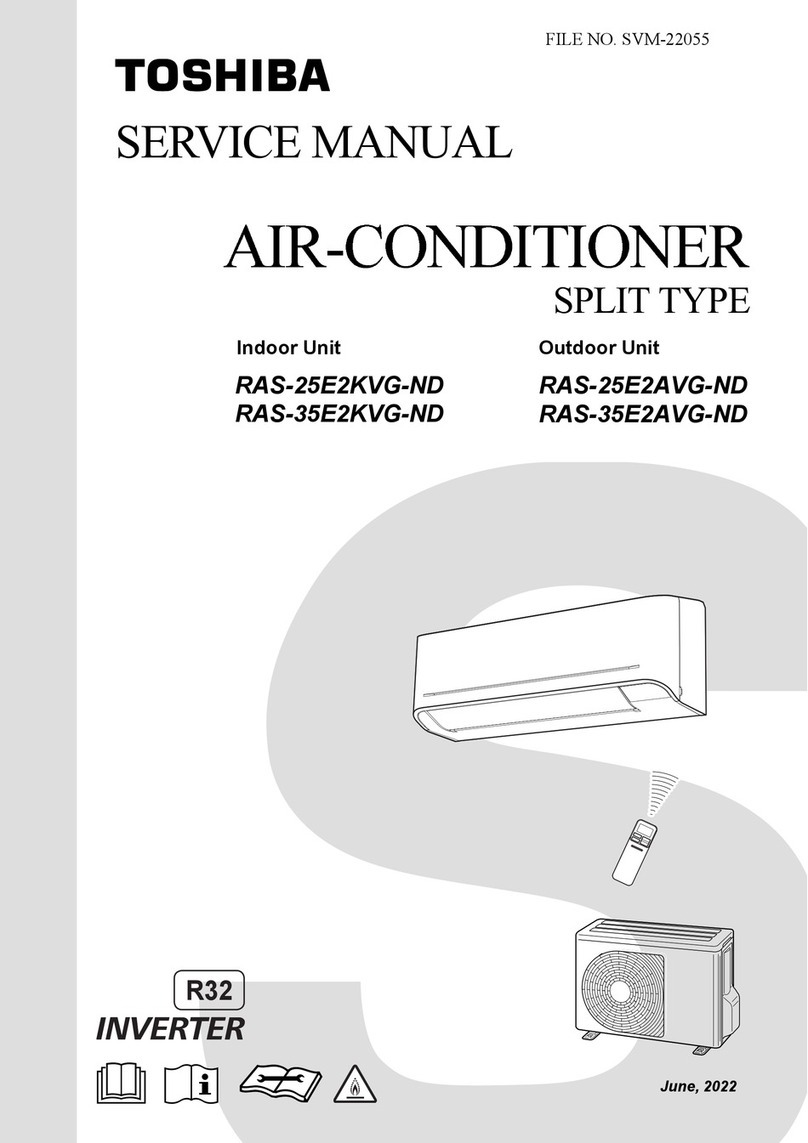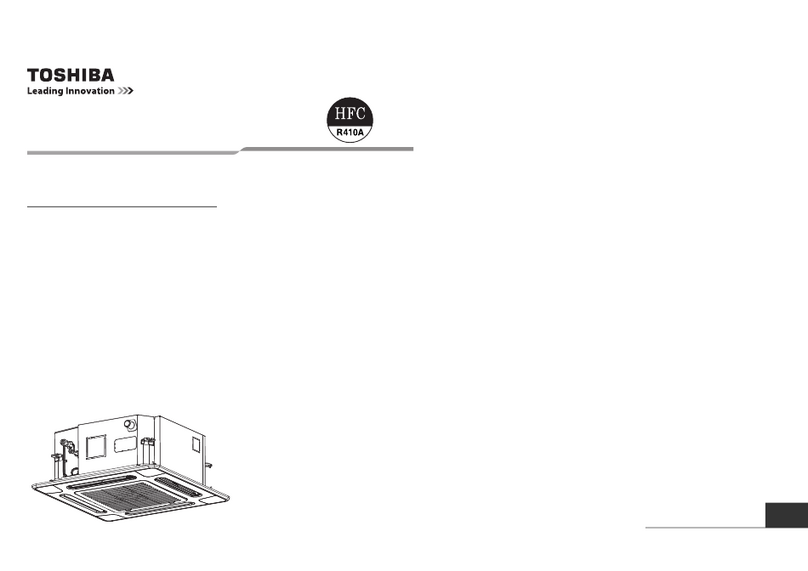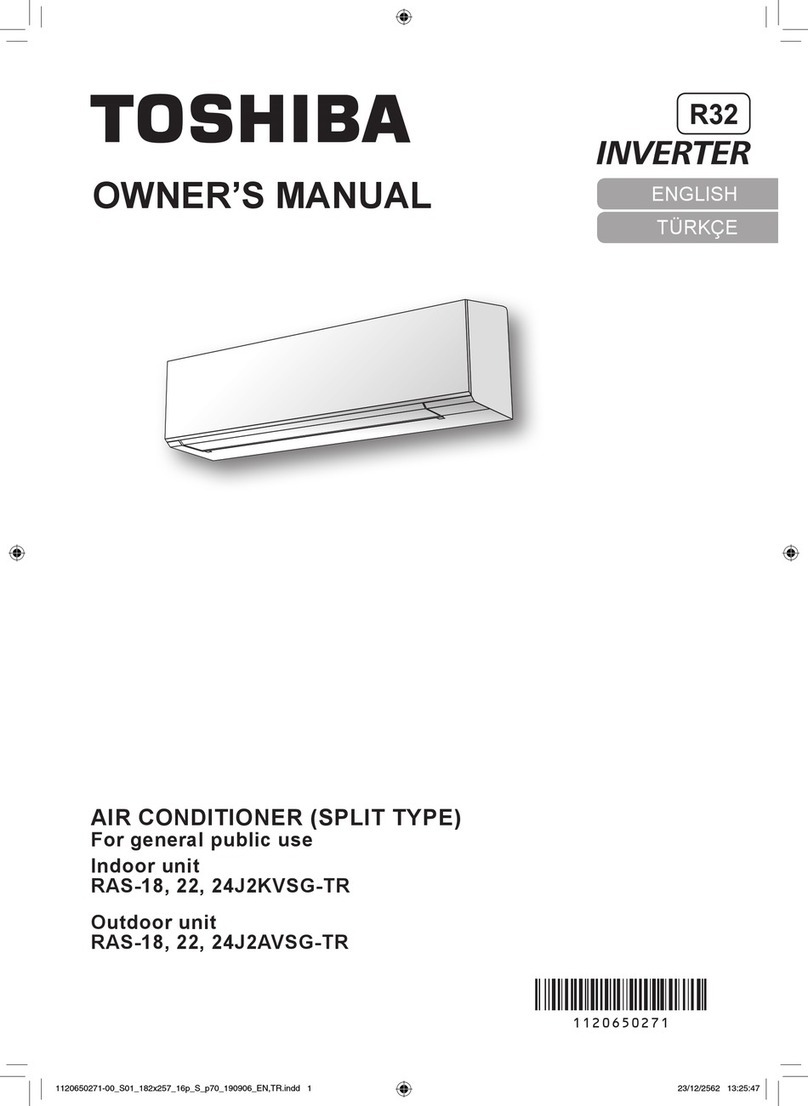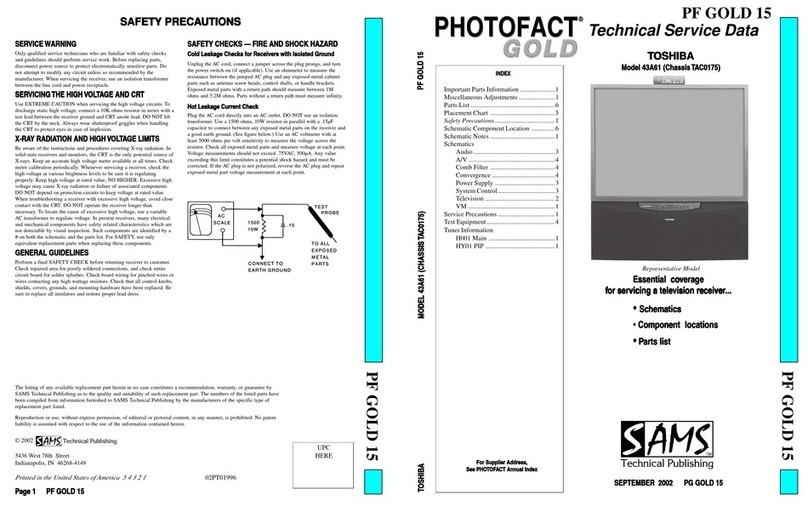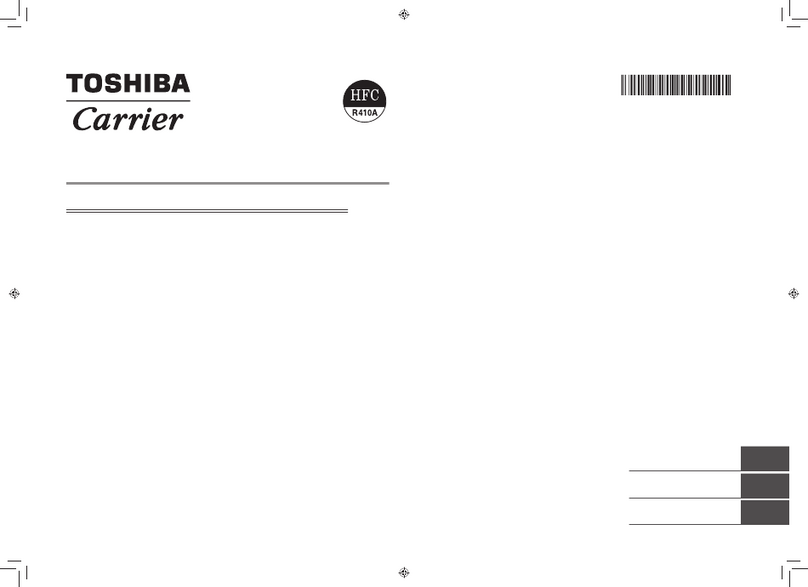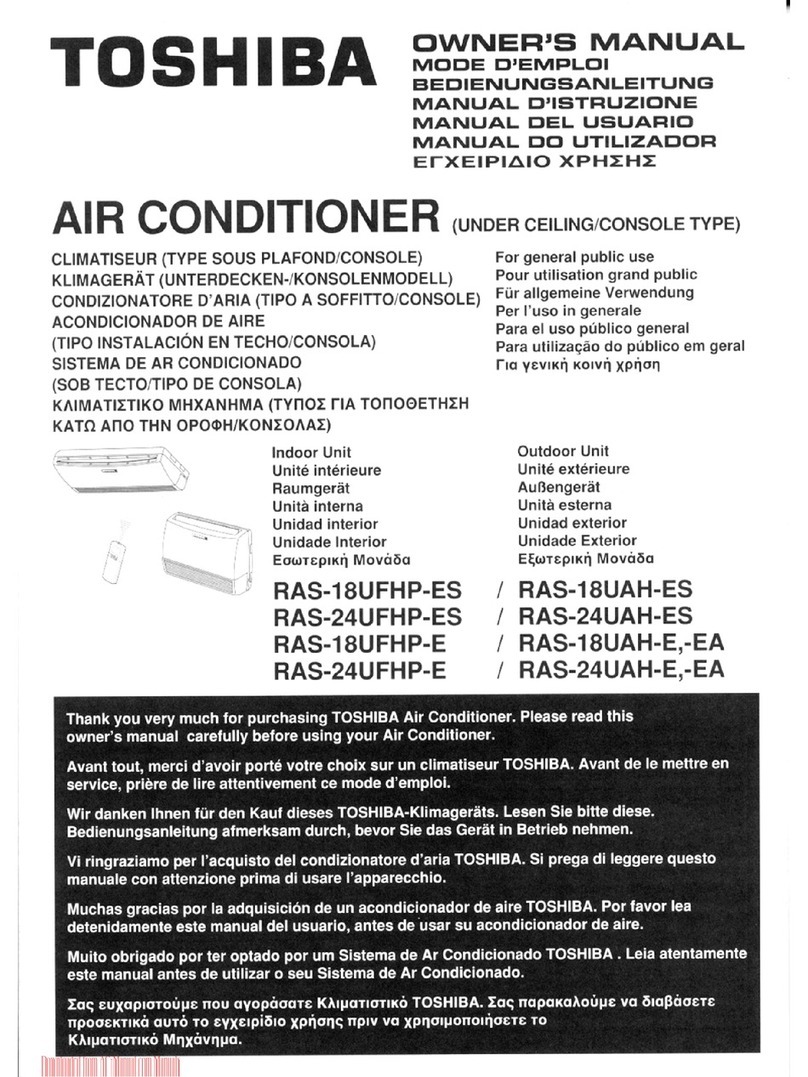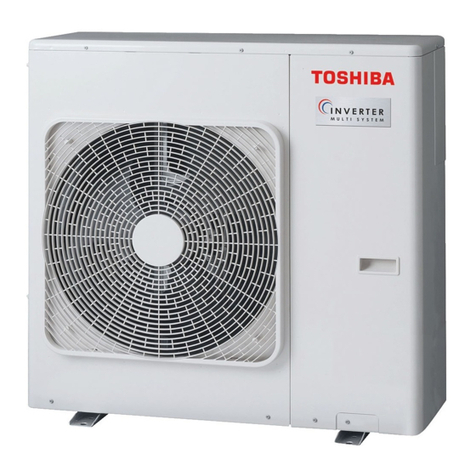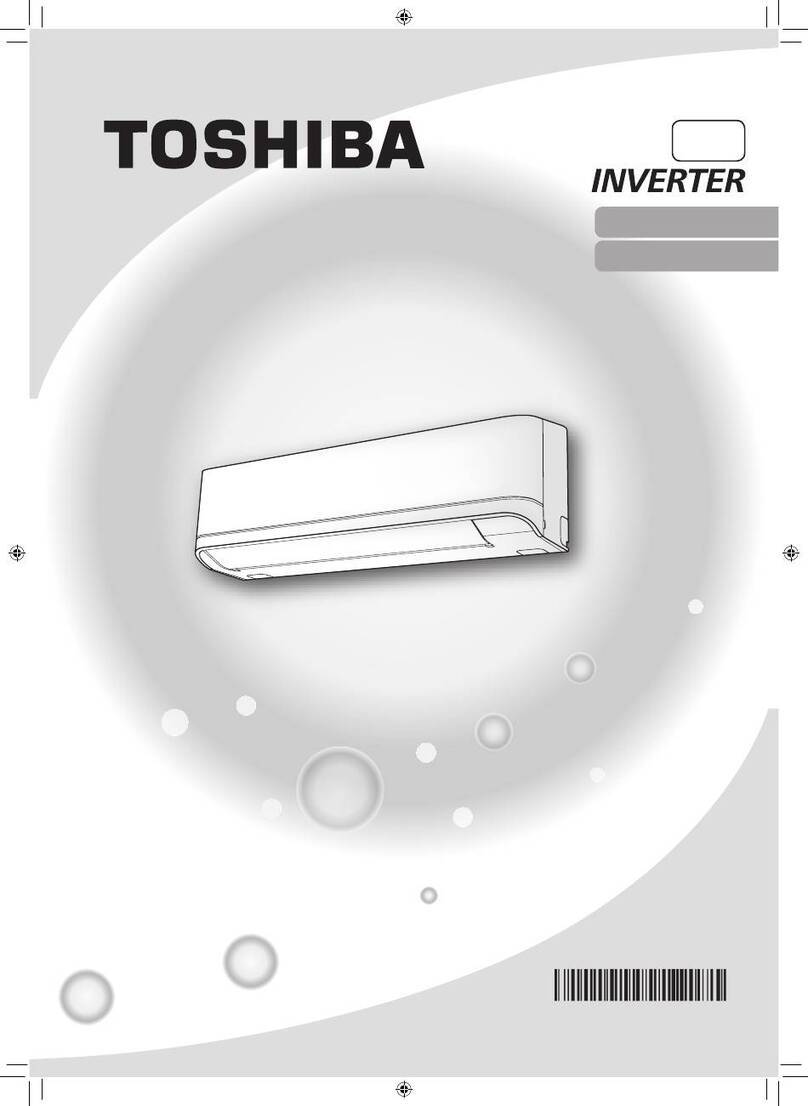
� 2 �
3-EN 4-EN
Thank you for purchasing this Toshiba Carrier air conditioner.
Please read carefully through these instructions that contain important information and ensure that you
understand them.
After reading these instructions, be sure to keep them in a safe place together with the Owner’s Manual and
Installation Manual supplied with your product.
Generic Denomination: Air Conditioner
DenitionofQualiedInstallerorQualiedServicePerson
The air conditioner must be installed, maintained, repaired and removed by a qualied installer or qualied service
person. When any of these jobs is to be done, ask a qualied installer or qualied service person to do them for you.
A qualied installer or qualied service person is an agent who has the qualications and knowledge described in
the table below.
Agent Qualicationsandknowledgewhichtheagentmusthave
Qualied
installer
• The qualied installer is a person who installs, maintains, relocates and removes the air conditioners
made by Manufacturer. He or she has been trained to install, maintain, relocate and remove the
air conditioners made by Manufacturer or, alternatively, he or she has been instructed in such
operations by an individual or individuals who have been trained and is thus thoroughly acquainted
with the knowledge related to these operations.
• The qualied installer who is allowed to do the electrical work involved in installation, relocation
and removal has the qualications pertaining to this electrical work as stipulated by the local laws
and regulations, and he or she is a person who has been trained in matters relating to electrical
work on the air conditioners made by Manufacturer or, alternatively, he or she has been instructed
in such matters by an individual or individuals who have been trained and is thus thoroughly
acquainted with the knowledge related to this work.
• The qualied installer who is allowed to do the refrigerant handling and piping work involved in
installation, relocation and removal has the qualications pertaining to this refrigerant handling
and piping work as stipulated by the local laws and regulations, and he or she is a person who
has been trained in matters relating to refrigerant handling and piping work on the air conditioners
made by Manufacturer or, alternatively, he or she has been instructed in such matters by an
individual or individuals who have been trained and is thus thoroughly acquainted with the
knowledge related to this work.
• The qualied installer who is allowed to work at heights has been trained in matters relating to
working at heights with the air conditioners made by Manufacturer or, alternatively, he or she has
been instructed in such matters by an individual or individuals who have been trained and is thus
thoroughly acquainted with the knowledge related to this work.
Qualied service
person
• The qualied service person is a person who installs, repairs, maintains, relocates and removes
the air conditioners made by Manufacturer. He or she has been trained to install, repair, maintain,
relocate and remove the air conditioners made by Manufacturer or, alternatively, he or she has
been instructed in such operations by an individual or individuals who have been trained and is
thus thoroughly acquainted with the knowledge related to these operations.
• The qualied service person who is allowed to do the electrical work involved in installation, repair,
relocation and removal has the qualications pertaining to this electrical work as stipulated by the
local laws and regulations, and he or she is a person who has been trained in matters relating to
electrical work on the air conditioners made by Manufacturer or, alternatively, he or she has been
instructed in such matters by an individual or individuals who have been trained and is thus
thoroughly acquainted with the knowledge related to this work.
• The qualied service person who is allowed to do the refrigerant handling and piping work involved
in installation, repair, relocation and removal has the qualications pertaining to this refrigerant
handling and piping work as stipulated by the local laws and regulations, and he or she is a
person who has been trained in matters relating to refrigerant handling and piping work on the
air conditioners made by Manufacturer or, alternatively, he or she has been instructed in such
matters by an individual or individuals who have been trained and is thus thoroughly acquainted
with the knowledge related to this work.
• The qualied service person who is allowed to work at heights has been trained in matters relating
to working at heights with the air conditioners made by Manufacturer or, alternatively, he or she
has been instructed in such matters by an individual or individuals who have been trained and is
thus thoroughly acquainted with the knowledge related to this work.
DenitionofProtectiveGear
When the air conditioner is to be transported, installed, maintained, repaired or removed, wear protective gloves
and “Safety” work clothing.
In addition to such normal protective gear, wear the protective gear described below when undertaking the special
work detailed in the table below.
Failure to wear the proper protective gear is dangerous because you will be more susceptible to injury, burns,
electric shocks and other injuries.
Work undertaken Protectivegearwear
All types of work Protective gloves
“Safety” working clothing
Electrical-related work
Gloves to provide protection for electricians
Insulating shoes
Clothing to provide protection from electric shock
Work done at heights
(50 cm or more) Helmets for use in industry
Transportation of heavy
objects Shoes with additional protective toe cap
Repair of outdoor unit Gloves to provide protection for electricians
Centerofgravity
Unit : in (mm)
5.5” (140)
8.9” (225)
EN
11.2” (285)
1131701101-00_S01_297x210_60p_S_p70_220426.indd 2 26/4/2565 11:41:09
